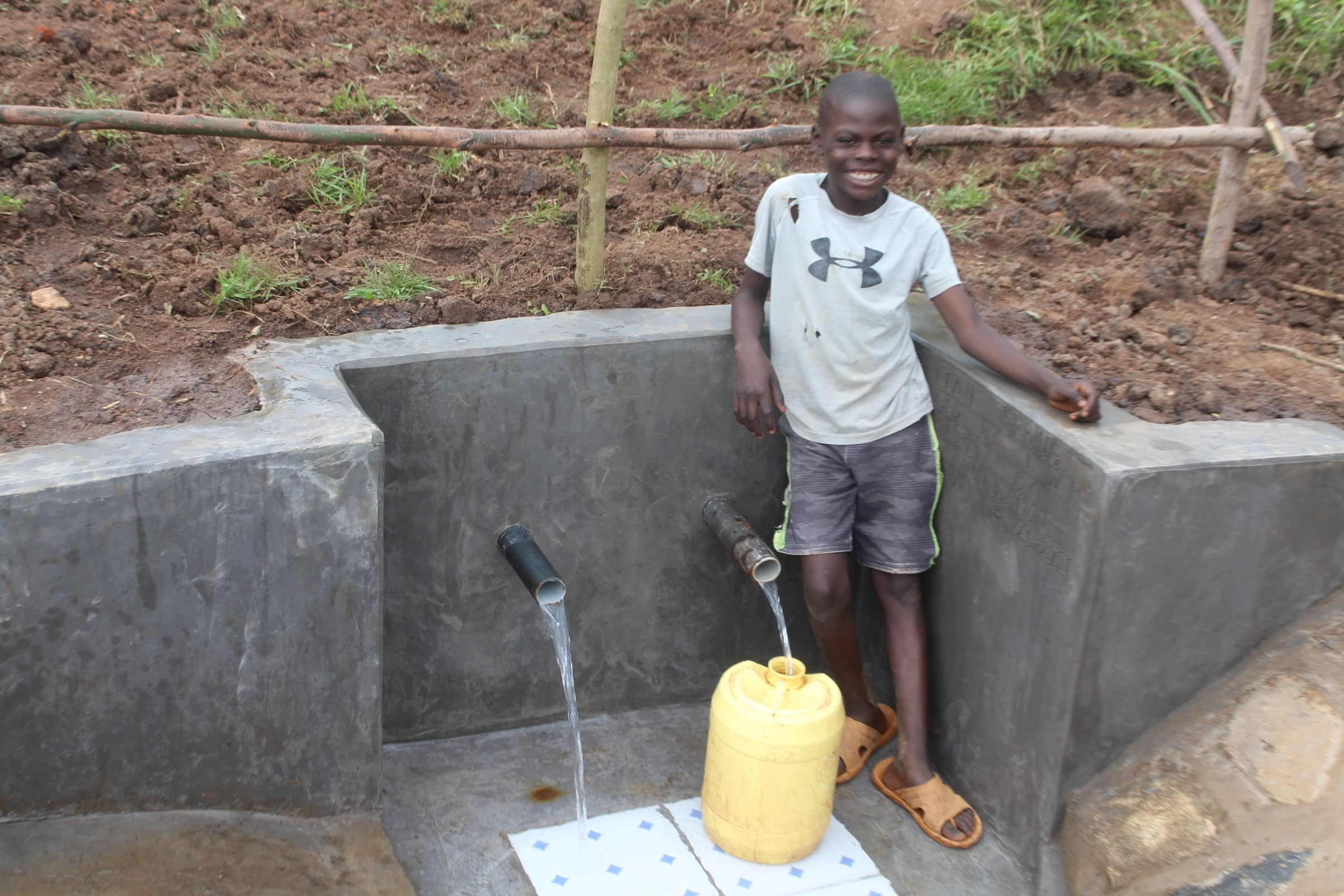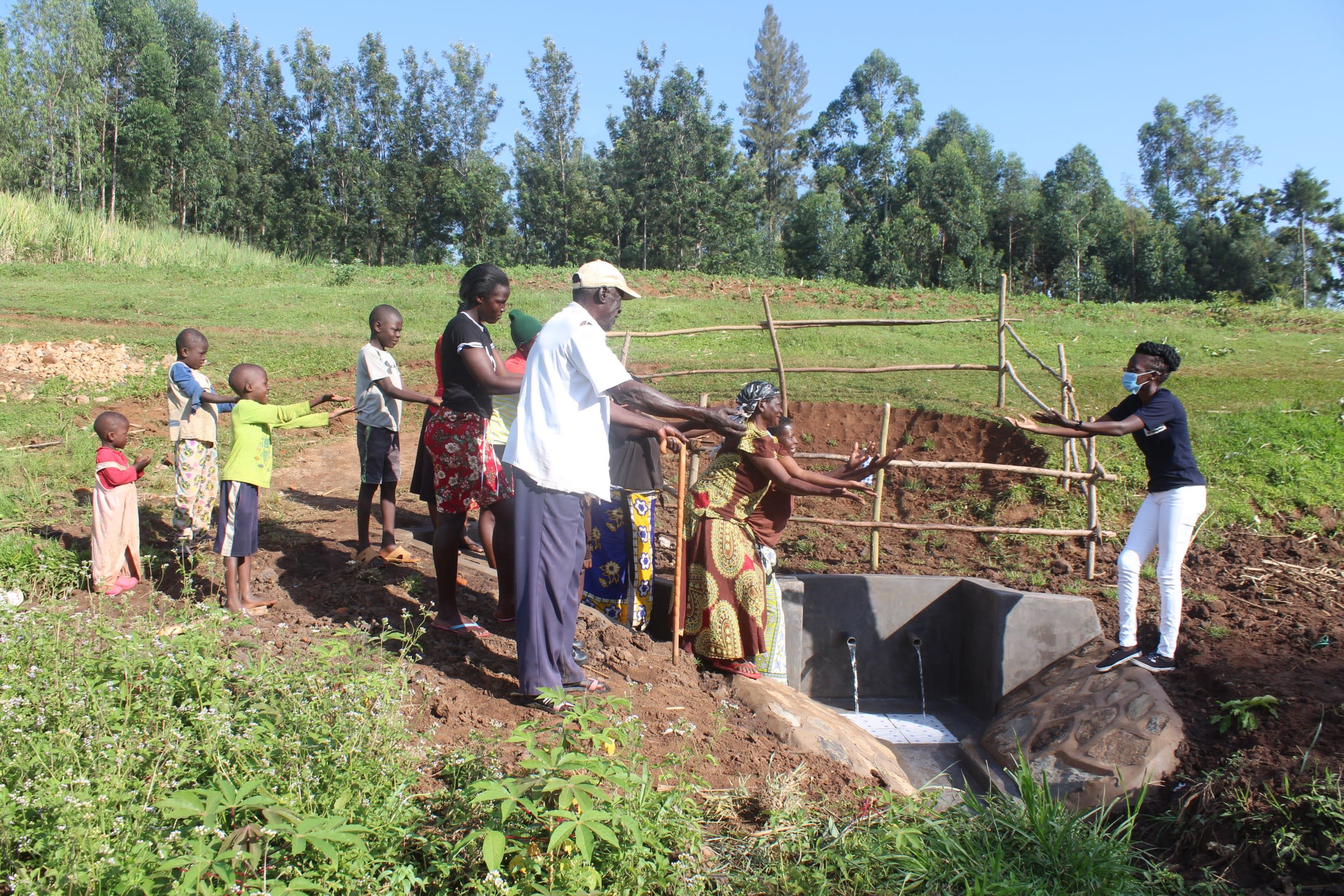Butunyi village is a vegetated area because most of the community members are small-scale farmers who have involved themselves in different farming activities. Most people live in semi-permanent houses with a few living in permanent homes. Apart from farming, women from this community are particularly known for running their own small businesses. People from neighboring communities come to buy different things from them. The Butunyi women believe that a woman should go the extra mile in taking care of her children without depending on her husband.
504 people in Butunyi depend on unprotected Elijah Spring as a year-round water source. This is a large number to depend on one spring, and as a result, long queues and a lot of wasted time are the norm for the women and children who fetch water here every day. Some prefer fetching water very early in the morning or late in the evening in the hope of avoiding the crowds. But fetching in the morning delays the women from doing other things like going to the garden, going to the market for those who do small businesses, and preparing their kids to go to school. Fetching in the evening, on the other hand, delays the women from going to the market to sell their commodities and also preparing supper.
The spring's open nature means the water is open to contamination which leads to waterbone diseases among the community members. Hence, the water is not safe for human consumption. Community members say cholera and stomachaches are commonly contracted among those that depend on this spring.
"The water source is open to contamination, making the water not safe for drinking. I make an effort of fetching it either early in the morning or late in the evening to avoid queueing and going home with dirty water because we are many," said Susan Were Makokha, referring to the large number of people relying on the spring.
The area directly around the spring also has a steep and then muddy and slippery terrain, making it particularly difficult for the many children who need to access the water daily.
"This water source is on a slopy terrain which makes it difficult for me to access water, especially during rainy season, and also it's very open and the water gets dirty easily," said a young Grivin.
What We Can Do:
Spring Protection
Protecting the spring will help provide access to cleaner and safer water and reduce the time people have to spend to fetch it. Construction will keep surface runoff and other contaminants out of the water. With the community’s high involvement in the process, there should be a good sense of responsibility and ownership for the new clean water source.
Fetching water is a task predominantly carried out by women and young girls. Protecting the spring and offering training and support will, therefore, help empower the female members of the community by freeing up more of their time and energy to engage and invest in income-generating activities and their education.
Training on Health, Hygiene, COVID-19, and More
To hold trainings during the pandemic, we work closely with both community leaders and the local government to approve small groups to attend training. We ask community leaders to invite a select yet representative group of people to attend training who will then act as ambassadors to the rest of the community to share what they learn. We also communicate our expectations of physical distancing and wearing masks for all who choose to attend.
The training will focus on improved hygiene, health, and sanitation habits in this community. We will also have a dedicated session on COVID-19 symptoms, transmission routes, and prevention best practices.
With the community’s input, we will identify key leverage points where they can alter their practices at the personal, household, and community levels to affect change. This training will help to ensure participants have the knowledge they need about healthy practices and their importance to make the most of their water point as soon as water is flowing.
Our team of facilitators will use a variety of methods to train community members. Some of these methods include participatory hygiene and sanitation transformation, asset-based community development, group discussions, handouts, and demonstrations at the spring.
One of the most important issues we plan to cover is the handling, storage, and treatment of water. Having a clean water source will be extremely helpful, but it is useless if water gets contaminated by the time it is consumed. We and the community strongly believe that all of these components will work together to improve living standards here, which will help to unlock the potential for these community members to live better, healthier lives.
We will then conduct a small series of follow-up trainings before transitioning to our regularly scheduled support visits throughout the year.
Training will result in the formation of a water user committee, elected by their peers, that will oversee the operations and maintenance of the spring. The committee will enforce proper behavior around the spring and delegate tasks that will help preserve the site, such as building a fence and digging proper drainage channels. The fence will keep out destructive animals and unwanted waste, and the drainage will keep the area’s mosquito population at a minimum.

 Protected Spring
Protected Spring
 Rehabilitation Project
Rehabilitation Project


































